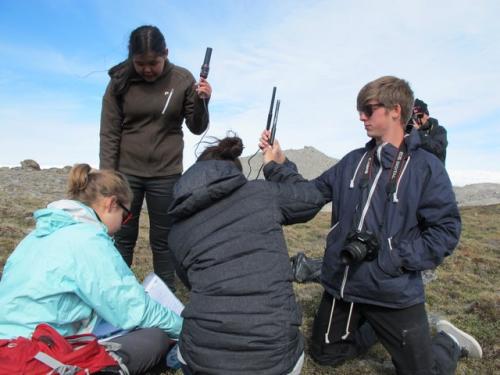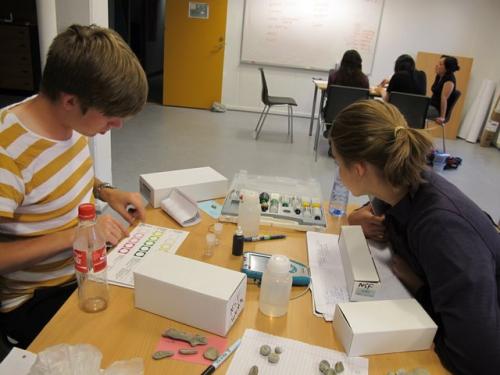The goal of the study was to determine what atmospheric variation, if any, was present between arctic microenvironments. It was predicted that colder, aquatic areas would have lower atmospheric carbon dioxide concentrations since water can absorb carbon dioxide, a greenhouse gas. Field tests were completed at a 16 different sites in the Kangerlussuaq area. The sites varied in vegetation, presence of water, human presence, and distance from the glacier. Atmospheric tests were done using probes to measure carbon dioxide, UVA, UVB, and ambient temperature. Albedo tests on the land surface were also done using a computer program to analyze the brightness of the land in comparison to white sheets of paper in photographs. Additionally, tests were completed to measure the water chemistry for those sites that were aquatic. Chemistry tests were done to measure phosphate, nitrate, nitrite, calcium/magnesium, and ammonium and pH was measured using a probe. It was found that there was some variation in carbon dioxide levels across the different types of sites while there was no real correlation between carbon dioxide and water chemistry, since most of the sites had chemically similar water. The ice areas had the lowest atmospheric carbon dioxide concentration while the non-vegetated areas had the highest. Additionally, the aquatic areas had a slightly lower average carbon dioxide concentration than compared to the average of the terrestrial areas. It can be concluded that the type of environment does have some effect on the atmospheric composition. This study made it evident that more in-depth research is needed to determine what other correlations are present in the data. More research is also needed to examine the significantly lower carbon dioxide concentrations.

Research questions
How does the atmosphere differ between terrestrial and aquatic environments?
Does the water chemistry affect the surrounding atmosphere?
Hypothesis and predictions
We predict that more vegetated areas will have lower carbon dioxide levels since plants acta as carbon sinks.
We predict that more acidic water will have lower carbon dioxide levels since carbon dioxide dissolves to form carbonic acid.
Group Members
Jeannie Wilkening (USA)
Emil Stærmose (Denmark)
Ellen Kleist (Greenland)
Tupaarnaq Brandt (Greenland)
Methodology

We have been collecting water and sets of atmospheric data from locations around the Kangerlussuaq area. We have tested our water samples for pH, nitrite, nitrate, phosphate, ammonium, and Ca-Mg levels. We have tested the atmosphere for UVA and UVB radiation, temperature, and carbon dioxide levels using Vernier probes.
We are then going to compare these datasets to find any correlations there might be between water and atmosphere. We have also analyzed the atmospheric conditions in different terrestrial areas with different types of vegetation (for comparison).
We are going to graphically analyze our results, comparing values for carbon dioxide, temperature, etc. to look for trends and patterns in our data.
Sources of error involves cloudy weather when measuring UVA and UVB levels.
We also have been taking pictures of a white piece of paper against our various sites. We then analyzed the brightness of our sites using a computer program.
Data/results
Link to photos and blogs
Jeannie's blog: http://jeanniewilkening.blogspot.com
Emil's blog (in Danish): http://staermose.tumblr.com/


Comments